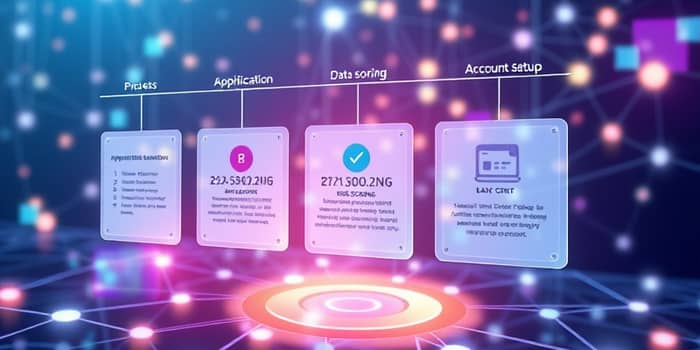
The journey from submitting a credit application to receiving approval can be complex and fraught with delays. In a competitive marketplace, speeding up this process is crucial for customer satisfaction and risk management.
The credit workflow encompasses the structured process organizations use to review, approve, and manage credit applications. It transforms raw customer data into actionable decisions, ensuring efficient, compliant, and risk-mitigated credit management across every stage.
By defining clear steps and responsibilities, companies can maintain regulatory adherence while responding swiftly to applicant needs.
Every credit workflow follows a series of stages that guide an application from initial request to account setup and beyond.
Below is a closer look at each major step and its impact on the overall cycle time.
During application submission, customers provide personal, employment, and financial information. The modern shift toward paperless and digital channel dominance reduces manual data entry and accelerates initial intake.
In the data collection and verification phase, systems perform multi-source validation for fraud prevention, cross-referencing credit bureaus, internal ledgers, and anti-fraud databases to ensure accuracy and integrity.
Credit review and scoring involve both human analysts and automated risk scoring models that evaluate factors like credit history, debt-to-income ratio, and payment patterns to quantify applicant risk.
Decision and approval routing rely on predefined, customizable business rules to decide whether to approve, reject, or request more information. Advanced systems support with multi-tiered approval routing for higher-value or complex applications.
Communication and notification keep applicants and internal stakeholders informed. Through real-time tracking and status visibility, automated alerts update everyone on progress, reducing inquiries and misunderstandings.
Once approved, account setup and execution ensure seamless data transfer and compliance checks before disbursing funds or extending credit lines, safeguarding against regulatory breaches.
Ongoing monitoring and portfolio review feature continuous and proactive creditworthiness assessment, where organizations track performance metrics and adjust limits to manage risk proactively.
Automation has revolutionized credit workflows, enabling institutions to process applications in minutes rather than days. Key benefits include:
Implementing automation tools allows teams to focus on exceptions and strategic tasks, rather than repetitive data handling.
Manual credit processes often suffer from slow cycle times, high error rates, and compliance risks. To address these obstacles, organizations should:
By proactively resolving pain points, companies can build a more reliable and scalable approval pipeline.
Several solutions on the market facilitate streamlined credit workflows, offering modules for application management, risk scoring, and routing. Leading platforms include SAP Credit Management, Microsoft Dynamics 365, Kissflow, and HighRadius. These systems often feature API integrations, modular design, and built-in compliance frameworks that accelerate deployment.
Choosing the right technology depends on factors like application volume, regulatory complexity, and integration requirements. A phased rollout with pilot testing helps mitigate implementation risks.
To maximize efficiency and risk control, credit teams should adhere to the following best practices:
Looking ahead, credit workflows will become more dynamic and intelligence-driven. Artificial intelligence and machine learning will enhance predictive risk scoring, while blockchain may offer immutable audit trails. Real-time open banking data will refine decision models, and embedded finance platforms will further accelerate application-to-funding timelines.
Streamlining your credit workflow from application to approval is essential for maintaining a competitive edge. By embracing automation, adopting clear processes, and leveraging robust technology, organizations can achieve streamlined, fast, and transparent workflows that benefit both customers and stakeholders. The future promises even greater innovation as emerging technologies redefine credit management paradigms.
References













